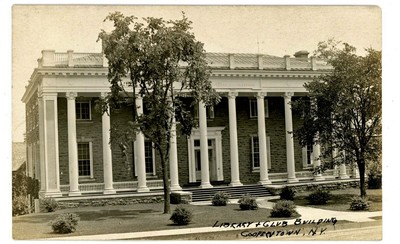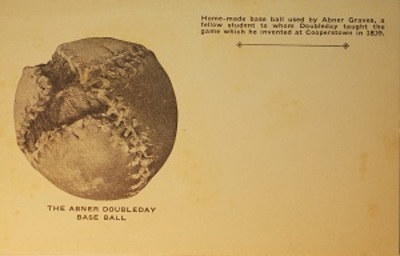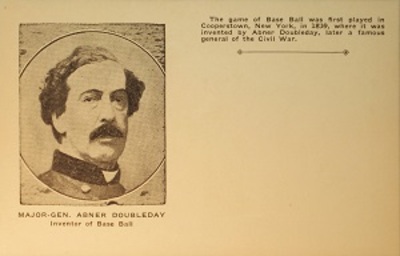The Origin and History of the Sepia Plaques and Postcards
In the early thirties the Village of Cooperstown decided to create a National Base Ball Museum and collect relics of the game. The Otsego County Historical Society agreed to add it's credential to help with the collection of art effects of the origin of base ball . National interest to support the Birth Place of Base B all that encouraged Stephen C. Clark Sr. and he directed Alexander Cleland his administrative assistant to work with the historical society and develop plans for a permanent building to house the museum.
Early in 1934 the collection of base ball art effects by Cleland was well underway. The collection was maintained and secured by the Otsego County Historical Society and displayed at The Village Club Building for the public to see.

Village Club Building and Library
Why these souvenir postcards were created by the Otsego County Historical Society is a mystery but postcards were a very popular collectable. They provided a quality souvenirs to the public after their visit to The Village Club. These post cards Pub. by Otsego Co. Historical Society predate the postcards produced by the National Baseball Museum using the same style and manufacture.
Renowned professional photographer of Cooperstown, Arthur J. Telfer who over the years had chronicled pictorially Cooperstown's history, many had been used as Post Card subjects. His glass negatives exist indicating that Telfer took photographs of Historic Events, Base Ball Relics, and potential displays that were used by the Freeman's Journal to produce sepia toned souvenirs post cards.
1934 / 1936 Type IA Historic Events & Art, Sepia Postcards
Pub. by Otsego Co. Historical Society


The back of these post cards read, Base ball was invented in Cooperstown, New York, by Abner Doubleday and first played there in 1839. National interest centers in the Centennial Celebration in 1939 at Cooperstown.
